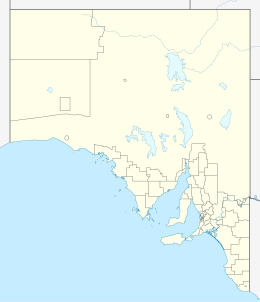Seal Island (Investigator Strait)
| Geography | |
|---|---|
| Location | Investigator Strait |
| Coordinates | 35°20′19″S 136°55′13″E / 35.33848°S 136.92017°ECoordinates: 35°20′19″S 136°55′13″E / 35.33848°S 136.92017°E |
| Highest elevation | 35 m (115 ft) |
| Administration | |
|
Australia
|
|
Seal Island is an island located in Investigator Strait off the south coast of Yorke Peninsula in the Australian state of South Australia about 7 kilometres (4.3 mi) south south-west of Stenhouse Bay. Since 1972, it has been part of the Althorpe Islands Conservation Park.
Seal Island is about 7 kilometres (4.3 mi) south south-west of Stenhouse Bay. It is described as an ‘elevated hump’ rising to a height of 35 metres (115 ft) with a series of ‘segmented islets’ at its west side. Seal Island is reported as being best accessed via its north coast and during the ‘calmest weather’. A number of sources consider Seal Island along with the Althorpe Islands and Haystack Island to be a group of islands known as the Althorpe Islands Group.
Seal Island was formed between 7500 and 8900 years ago after sea levels rose at the start of the Holocene thereby separating Yorke Peninsula from Kangaroo Island. Seal Island is the remains of a granite inselberg capped by a layer of Bridgewater Formation calcarenite which has been extensively eroded by the action of the sea. Seal Island rises from a depth of 20 metres (66 ft) within 300 metres (980 ft) to its west and south shores, and within 700 metres (2,300 ft) of its east shore.
A survey carried out in 1996 reported that 10 species of plants to be present including Nitre-bush, Grey Samphire, Roundleaved Pigface, Sea Celery, Marsh Saltbush and Ruby Saltbush and Australian Hollyhocks.
...
Wikipedia

